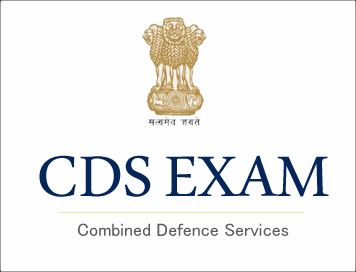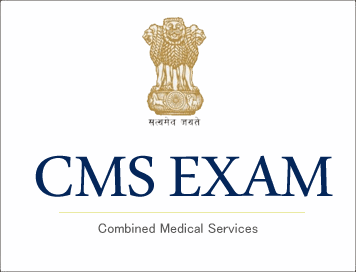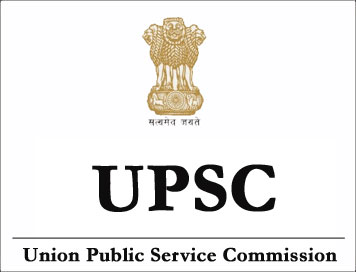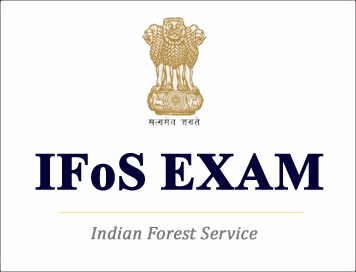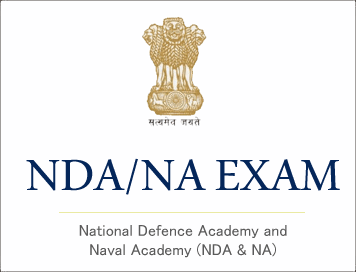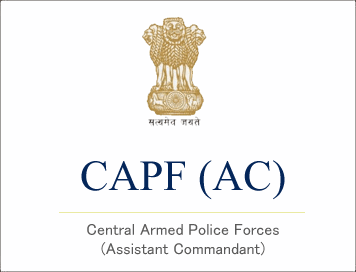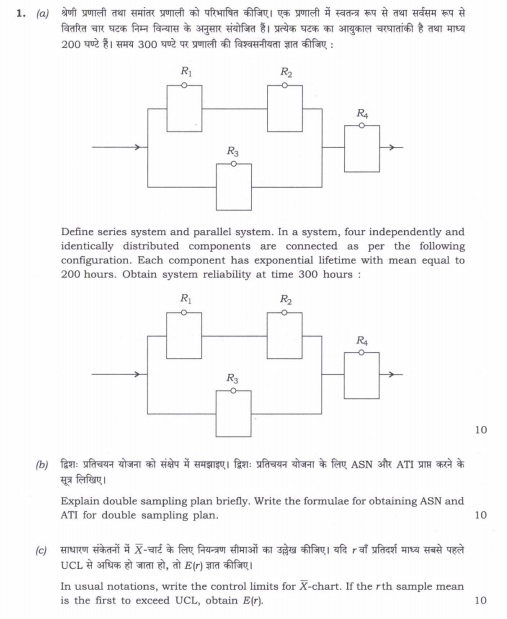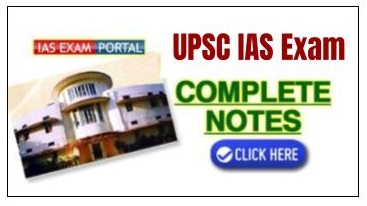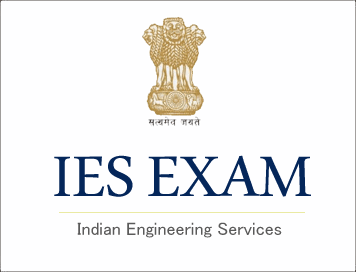
(Final Result) UPSC Engineering Services (Mains) Exam-2019
Based on the results of the written part of the Engineering Services Examination, 2019 held by the UNION PUBLIC SERVICE COMMISSION in June, 2019 and the interviews for Personality Test held in September-October, 2019, the following are the lists, in order of merit, of candidates who have been recommended for appointment to various Services/Posts in the Ministries/Departments concerned.
2. The number of candidates recommended for appointment under different disciplines are as under:
|
Discipline
|
Number of candidates recommended for appointment
|
|
Total
|
General
|
OBC
|
SC
|
ST
|
|
Civil Engineering
|
233
(including 11# PwBD-1 & 02 PwBD-3 candidates)
|
108
|
70
|
38
|
17
|
|
Mechanical Engineering
|
87
(including 04 PwBD-1 & 02 PwBD-3 candidates)
|
58
|
17
|
08
|
04
|
|
Electrical Engineering
|
86
(including 03 PwBD-1 & 01 PwBD-3 candidates)
|
40
|
28
|
09
|
09
|
|
Electronics & Telecommunication Engineering
|
88
(including 05 PwBD-1 & 02 PwBD-3 candidates)
|
42
|
24
|
14
|
08
|
|
Total
|
494
(including 23 PwBD-1 & 07 PwBD-3 candidates)
|
248
|
139
|
69
|
38
|
# 02 vacancies of PwBD-3 interchanged with PwBD-1 due to non-availability of suitable PwBD-3 candidates 3. Appointments shall be made strictly in accordance with the extant rules and the number of vacancies available. Allotment of candidates to various Services/Posts shall be made according to ranks obtained and preference of Services expressed by them.
4. The number of vacancies reported by the Government for Group ‘A’/’B’Services/Posts to be filled are as under:
|
Discipline
|
Vacancies
|
|
Total
|
General
|
OBC
|
SC
|
ST
|
|
Civil Engineering
|
260 {including 15 vacancies reserved for PwBD candidates (09* PwBD-1 & 06* PwBD-3)}
|
135
|
70
|
38
|
17
|
|
Mechanical
Engineering
|
103 {including 06 vacancies reserved for PwBD candidates (04 PwBD-1 & 02 PwBD-3)}
|
74
|
17
|
08
|
04
|
|
Electrical Engineering
|
096 {including 04 vacancies reserved for PwBD candidates (03 PwBD-1 & 01 PwBD-3)}
|
50
|
28
|
09
|
09
|
|
Electronics & Telecommunication
Engineering
|
094 {including 07 vacancies reserved for PwBD candidates (05 PwBD-1 & 02 PwBD-3)}
|
48
|
24
|
14
|
08
|
|
Total
|
553 {including 32 vacancies reserved for PwBD candidates (21 PWBD-1 & 11 PWBD-3)}
|
307
|
139
|
69
|
38
|
|
* 02 vacancies interchangeable for PwBD-1 to PwBD-3 and vice versa
|
* 02 vacancies interchangeable for PwBD-1 to PwBD-3 and vice versa
5.1 The candidature of 66 recommended candidates with following Roll Nos. is provisional:
CIVIL ENGINEERING (27Nos.)
|
0800713
|
0801188
|
0801275
|
0803519
|
0803595
|
0804333
|
0806505
|
|
0807833
|
0810948
|
0812637
|
0813734
|
0814014
|
0815044
|
0815384
|
|
0815641
|
0816754
|
0816757
|
1007567
|
1100323
|
1102948
|
1105068
|
|
1400271
|
1400634
|
1401560
|
4100998
|
4900641
|
4901046
|
|
MECHANICAL ENGINEERING (09 Nos.)
|
0506544
|
0507813
|
0817114
|
0824840
|
0827696
|
|
0829444
|
1108811
|
1303901
|
1304450
|
|
ELECTRICAL ENGINEERING (13 Nos.)
|
0835310
|
0835729
|
0836480
|
0838447
|
0840590
|
0842787
|
0842917
|
|
0844011
|
0844424
|
1019381
|
1209836
|
1305495
|
5104249
|
|
ELECTRONICS & TELECOMMUNICATION ENGINEERING (17 Nos.)
|
0106435
|
0106584
|
0413554
|
0516394
|
0849293
|
0849420
|
|
0849490
|
0849662
|
0849995
|
0850033
|
0851822
|
0852015
|
|
0853030
|
1022597
|
1026531
|
1027814
|
1028245
|
|
5.2 The offer of appointment to the candidates, whose result has been kept provisional will not be issued till the Commission verifies the original documents (awaited from such candidates) and clears their provisional status. The provisionality of these candidates will remain valid only for a period of three months [i.e. upto 24/01/2020] from the date of declaration of final result. Such provisional candidates will have to submit their original documents to the Commission only. In case the candidate fails to submit the requisite documents, as required by the Commission, within the above prescribed period, his/her candidature will be cancelled and no further correspondence will be entertained in this regard.
6. In accordance with Rule 13 (iv) & (v) of the Engineering Services Examination Rules 2019, the Commission is maintaining a consolidated Reserve List of candidates for each discipline as under:
|
Discipline
|
Number of candidates kept in Reserve List
|
|
General
|
OBC
|
SC
|
ST
|
Total
|
|
Civil Engineering
|
25
|
19
|
01
|
05
|
50
|
|
Mechanical Engineering
|
16
|
16
|
--
|
--
|
32
|
|
Electrical Engineering
|
10
|
08
|
--
|
02
|
20
|
|
Electronics & Telecommunication Engineering
|
06
|
06
|
--
|
--
|
12
|
|
Total
|
57
|
49
|
01
|
07
|
114
|
7. Union Public Service Commission has a ‘Facilitation Counter’ near Examination Hall Building in its Campus. Candidates may obtain any information/clarification regarding their Examination/recruitments on working days between 10:00 A.M. and 05:00 P.M. in person or over Telephone Nos. 011-23385271 and 011-23381125 from this Counter. The result will also be available on the UPSC Website i.e. www.upsc.gov.in. The mark sheet shall be made available on the website within fifteen days from the date of declaration of result.
SERVICE:CIVIL ENGINEERING
|
SR.No
1
|
Roll No
0400156
|
NAME
ABUZAR GAFFARI
|
|
2
|
0601951
|
PRAMIT DEBMALLIK
|
|
3
|
0814286
|
AMARJEET
|
|
4
|
0814170
|
AMAN GULIA
|
|
5
|
2602191
|
AYUSH CHANDRA DWIVEDI
|
|
6
|
0800072
|
KABIL BHARGAVA
|
|
7
|
0802742
|
ABHISHEK KUMAR
|
|
8
|
0815568
|
YOGESH KUMAR
|
|
9
|
0804244
|
ANKIT KUMAR
|
|
10
|
0802312
|
TUSHAR GARG
|
|
11
|
0807320
|
ANURAG ANAND
|
|
12
|
0808999
|
AKASH DEEP SINGH
|
|
13
|
5000517
|
PATHIPATI RAMU
|
|
14
|
0807855
|
ABHISHEK SINGH TOMAR
|
|
15
|
0815641
|
BHERJAS MUHAMMAD P P
|
|
16
|
0801348
|
VIJAYANK GARG
|
|
17
|
0806505
|
PRAMOD KUMAR
|
|
18
|
1401455
|
SUBODH THAPLIYAL
|
|
19
|
0810373
|
AVINASH JAIN
|
|
20
|
0804874
|
BANBARI LAL MEENA
|
|
21
|
0814408
|
NIKHIL KUMAR
|
|
22
|
2602352
|
SHUBHRANSHU DWIVEDI
|
|
23
|
1102998
|
PARTH PAREEK
|
|
24
|
0404109
|
SHAMS AHMED
|
|
25
|
0812900
|
VIKRAM
|
|
26
|
0801641
|
SHREYA SHEKHAR
|
|
27
|
0800994
|
JAYESH ATREYA
|
|
28
|
0200185
|
ABHASH PRATAP SINGH
|
|
29
|
0811107
|
ONKAR ASHISH
|
|
30
|
5101561
|
ABHISHEK KUMAR GUPTA
|
|
31
|
0815824
|
GAUTAM GOEL
|
|
32
|
0815463
|
UMAKANT PRAJAPATI
|
|
33
|
0400054
|
VIVEK SINGLA
|
|
34
|
1006581
|
SIRIGIRI MANIKANTA
|
|
35
|
0813578
|
AKASH TIWARI
|
|
36
|
0405176
|
SANCHIT SHRIVASTAVA
|
|
37
|
0807964
|
GAURAV JOSHI
|
|
38
|
0807833
|
MANOJ PATIDAR
|
|
39
|
0812159
|
VANDNESH SHEKHAWAT
|
|
40
|
1105894
|
VISHNU CHAUDHARY
|
|
41
|
0809321
|
MAYANK UPADHYAY
|
|
42
|
0803519
|
MRIDUL BURAGOHAIN
|
|
43
|
0401711
|
PRAKHAR SINGH
|
|
44
|
1105541
|
SANKALP AGARWAL
|
|
45
|
0800643
|
APOORV VASHISTHA
|
|
46
|
0806645
|
YOGITA MEENA
|
|
47
|
0404986
|
MOHAK JUNEJA
|
|
48
|
0801314
|
MIR ATIF
|
|
49
|
1400768
|
SAMARTH
|
|
50
|
0809917
|
ANUJ JAIN
|
|
51
|
1200722
|
VISHAL TYAGI
|
|
52
|
0808848
|
VIJAY SHARMA
|
|
53
|
0807415
|
VIVEK KUMAR SHARMA
|
|
54
|
0814033
|
MOHIT RAJ
|
|
55
|
0809825
|
SWATANTRA KUMAR JAIN
|
|
56
|
0804221
|
NUPUR TRIPATHI
|
|
57
|
0802070
|
SATYAM BARANWAL
|
|
58
|
1102143
|
SHREYANS MEHTA
|
|
59
|
0815191
|
ABHISHEK KUMAR SINGH
|
|
60
|
0801069
|
KATAMREDDY GEETHA KRISHNA
|
|
61
|
4901362
|
AMAN KUMAR
|
|
62
|
0808180
|
SURJEET KUMAR
|
|
63
|
0800249
|
GARVIT SHARMA
|
|
64
|
1202007
|
SHUBHAM BAJAJ
|
|
65
|
0802966
|
ATUL KUMAR SINGH
|
|
66
|
0802258
|
GURWINDER SINGH
|
|
67
|
0808022
|
DUDDU JAGADEESH
|
|
68
|
3501706
|
AJAY GAUTAM
|
|
69
|
0601827
|
AVISHEKH JAISWAL
|
|
70
|
0600412
|
ADITYA
|
|
71
|
0804431
|
AKSHAY DADHICH
|
|
72
|
0808149
|
ASHUTOSH TIWARI
|
|
73
|
0812550
|
ALOK
|
|
74
|
5100220
|
KATHE SAI CHARAN
|
|
75
|
0808760
|
AMOL NAMDEO
|
|
76
|
0814473
|
GOPAL KUMAR
|
|
77
|
0800447
|
ROHIT KUMAR GUPTA
|
|
78
|
0816026
|
AKSHAY SHARMA
|
|
79
|
0800268
|
SATYADEEP SHARMA
|
|
80
|
4101311
|
RISHAV VATS
|
|
81
|
1105361
|
AJAY KUMAR SHARMA
|
|
82
|
0807253
|
AKHIL JAIN
|
|
83
|
0805692
|
ALANKRITA
|
|
84
|
1102041
|
VINOD BHARODIYA
|
|
85
|
0812474
|
AMAN GUPTA
|
|
86
|
1007763
|
CHAPPALE NAGARJUNA REDDY
|
|
87
|
0809000
|
AJEET PRATAP SINGH
|
|
88
|
0811344
|
MAHENDRA KUMAR
|
|
89
|
2603220
|
RAJAT MISHRA
|
|
90
|
0807239
|
MANISH KUMAR MEENA
|
|
91
|
0805532
|
TARUN KUMAR BANSAL
|
|
92
|
0805154
|
DANGUDUBIYYAM NAGENDRA BALAJI
|
|
93
|
0201124
|
ANJANI KUMAR MAURYA
|
|
94
|
0800592
|
PUSPENDRA KUMAR KHATANA
|
|
95
|
0804752
|
HEMANT RAJ SHARMA
|
|
96
|
1102152
|
ABHISHEK MAJI
|
|
97
|
3501890
|
ABHINAV GOYAL
|
|
98
|
0814488
|
MOHIT SINGHAL
|
|
99
|
0808006
|
DEVIKA PUJA GARG
|
|
100
|
0812309
|
VIVEK KUMAR
|

